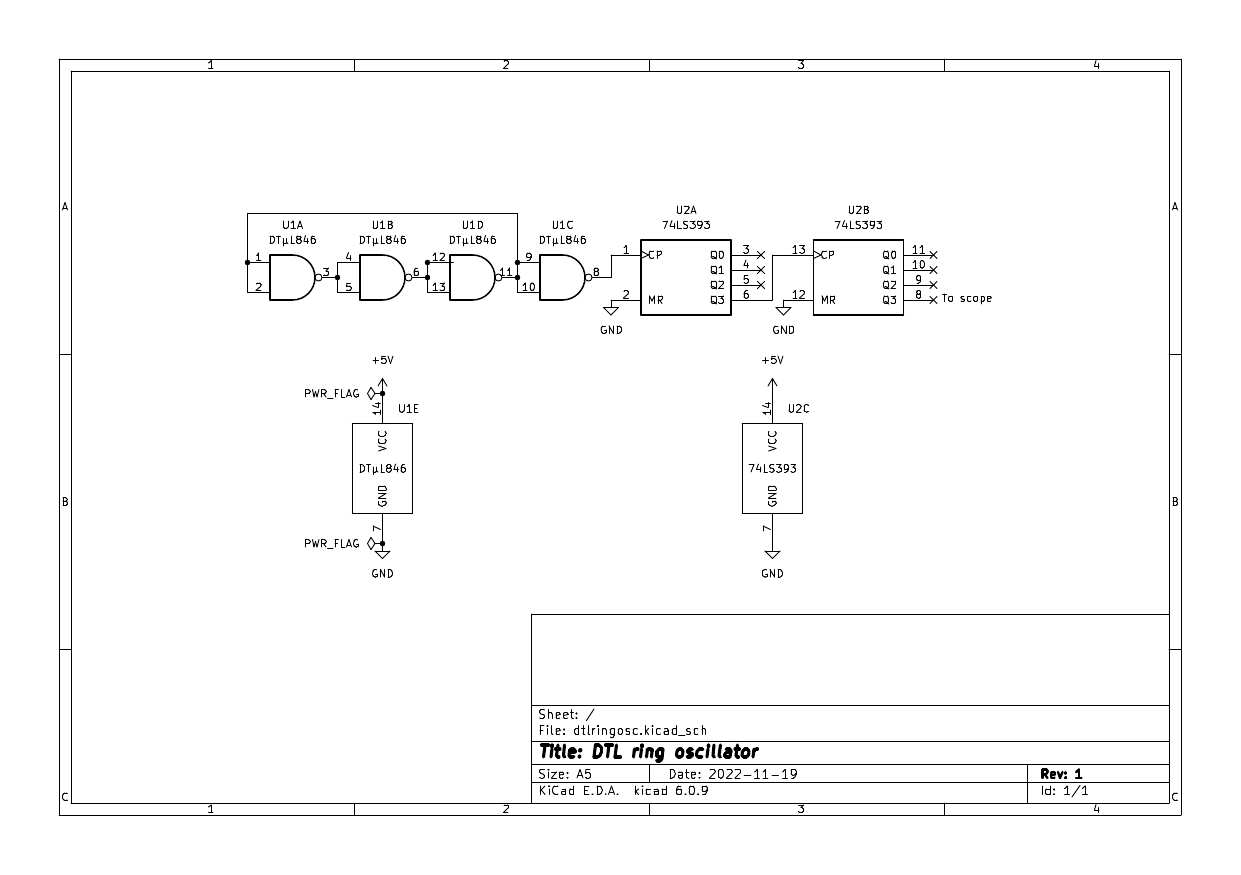
Following #Ring Oscillators: Fairchild DTL 949 I decided to see if I could make some use of a handful of DTµL 846 quad 2-input NAND chips I have, since it's very easy to wire up a ring oscillator. 3 gates form the oscillator and the fourth buffers the output. I do not have a scope of sufficient bandwidth to measure to 10 MHz so I sent the output to a 74LS393 as a divide by 256 counter. So to get the original frequency, multiply by 256.
The DTL chip was mounted on a repurposed precision IC socket, slightly damaged by a soldering iron. This avoids any stray capacitance from breadboards, but allows different chips to be plugged in. Here are the results of the few good chips I have (the others in my pile had one faulty gate):
- 37 kHz -> 9.5 MHz
- 36 kHz -> 9.2 MHz
- 38 kHz -> 9.7 MHz
The frequency stability is not great, it fluctuates in the short term. In the medium term I noticed it sped up a bit after "warming up". But it's pretty certain that it will not exceed 10 MHz.
So what to do with these oscillators? Where can I use them that doesn't require the accuracy and stability of crystals, which I'm not short of? Perhaps where I don't want the added components for a crystal oscillator. But even ancient MCUs have built-in gates for crystals, requiring only a couple of load capacitors. Modern MCUs even have a builtin RC oscillator mode which is good enough when timing isn't critical. Maybe some kind of coarse timing circuit? But the divisor would be large, so might as well use a MCU again. I'll put that question in the back of my head while I move on to other projects.
Out of interest I tried a 74LS00 chip (which has the same pinout) in the harness and I got 133 kHz -> 34 MHz.
 Ken Yap
Ken Yap
Discussions
Become a Hackaday.io Member
Create an account to leave a comment. Already have an account? Log In.
Your results (~9.x MHz) sound great, about what I'd expect, also the 74LS00. For grins, try a 74AHC00 sometime.
Are you sure? yes | no